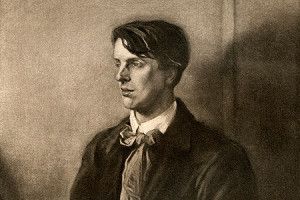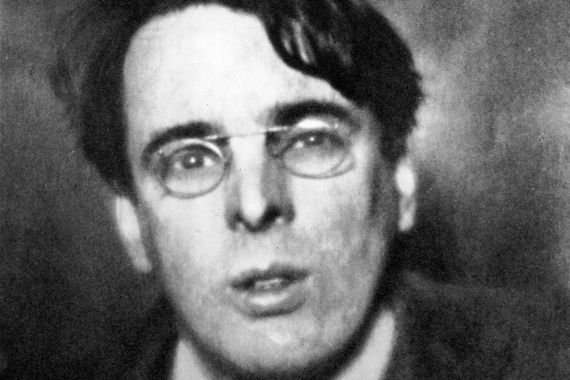

It is believed “wild” that she could have forgotten their love by the speaker, which shows that time has obviously passed. Jervis grandson Benjamin married Mary Butler, daughter of a landed family in County Kildare. His father, John Butler Yeats (18391922), was a descendant of Jervis Yeats, a Williamite soldier and linen merchant who died in 1712.
WILLIAM BUTLER YEATS YOUNG FREE
He believes that not even the girl’s mother can “know it” as he knows. Life Early Years An Anglo-Irishman, William Butler Yeats was born in Sandymount, County Dublin, Ireland. Youll love the To A Young Girl by William Butler Yeats Print at Wayfair - Great Deals on all Dcor & Pillows products with Free Shipping on most stuff. While the girl moves on, the speaker holds on. He studied poetry in his youth, and from an early age was fascinated by both Irish. The use of vocabulary is intended for the reader to understand that the speaker is younger as well.īy understanding that the speaker and his “girl” aren’t of a high level of maturity, the reader feels the relentless agony of young love, and the power that girls have over boys. William Butler Yeats was an Irish poet and dramatist, and one of the. In the title, the word “girl” gives the impression that the object of the speaker’s affection was adolescent. His first collection, Crossways, appeared in 1889 when he was still in his mid. His words are those in which most can understand. Take for example lines 1-3: “My dear, my dear I know/ More than another/What makes your heart beat so.” Perhaps Yeats was trying to give the effect that this was in his younger, teen years. William Butler Yeats (1865-1939) is one of the greatest of all Irish poets.

In this poem by Yeats, vocabulary is consistantly shown with simplicity. The young girl that the speaker is talking about has broken his heart, and forgotten that he was the one who “Set all her blood astir.” He thinks it wild for her to just turn her head from him and pretend that their love was only a vision that the man wanted not anything of real substance. In this poem, “To a Young Girl”, we can see the broken-hearted speaker allegating that he know her better than any other. This process is experimental and the keywords may be updated as the learning algorithm improves.William Butler Yeats’ poem instantly caught my attention with the use of his simple vocabulary and straight-forward theme. These keywords were added by machine and not by the authors. William Butler Yeats (13 June 1865 28 January 1939) was an Irish poet, dramatist, writer, and politician. By this time, his Bedford Park residence was a hive of expatriate Irish cultural activity and the poet himself was embarked upon a path that would see him definitively transform the image and identity of Ireland and the Irish, not only in the minds of his compatriots but in the eyes of Britain and the world. Six years later Yeats returned to London to play an integral part in several literary and dramatic ventures, including the establishment of the landmark Irish Literary Society in January 1892. In January 1877 Willie was enrolled at the Godolphin School in Hammersmith, where he remained until 1881, the year in which the family moved back to Dublin. Yeats was still an infant when his family first moved to London in 1867 and he was to spend the next decade being ferried between Sligo, Dublin and Bedford Park in Hammersmith, where John Butler Yeats temporarily settled his cash-strapped family. The speaker, an old man, leaves behind the country of the young for a visionary quest to Byzantium, the ancient city that was a major seat of early Christianity. Yeats (1865-1939), reflects on the difficulty of keeping one’s soul alive in a fragile, failing human body. Yet neither religion nor breeding could insulate young Willie from being mocked as a ‘Mad Irishman’ by his London schoolfellows, as the following extract from his first piece of sustained autobiographical prose, composed in 1914, attests. Sailing to Byzantium, by the Irish poet W.B. Yeats, of course, was a scion of the provincial Irish Protestant bourgeoisie, whose ancestors would have been mistrusted by Barclay’s peasant forebears. Yeats (1865–1939) exhibit a telling congruity in their depiction of an Irish childhood in England in which racially motivated bullying, and the anti-English animus that was its converse, play a formative role. Although widely divergent as works of literature, the autobiographies of Tom Barclay and W.


 0 kommentar(er)
0 kommentar(er)
